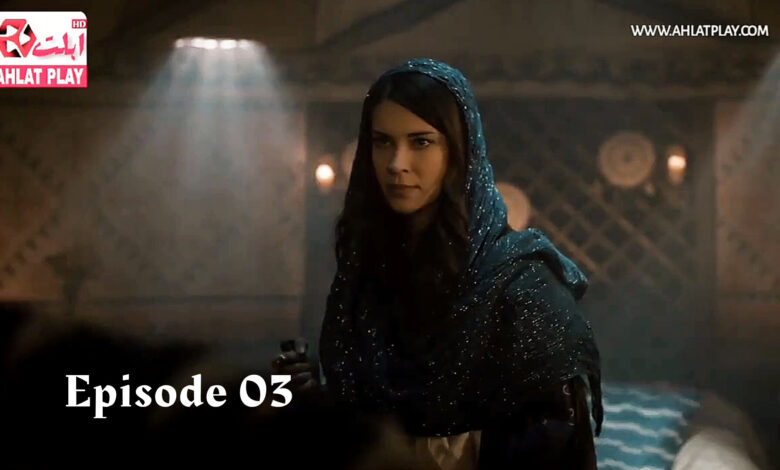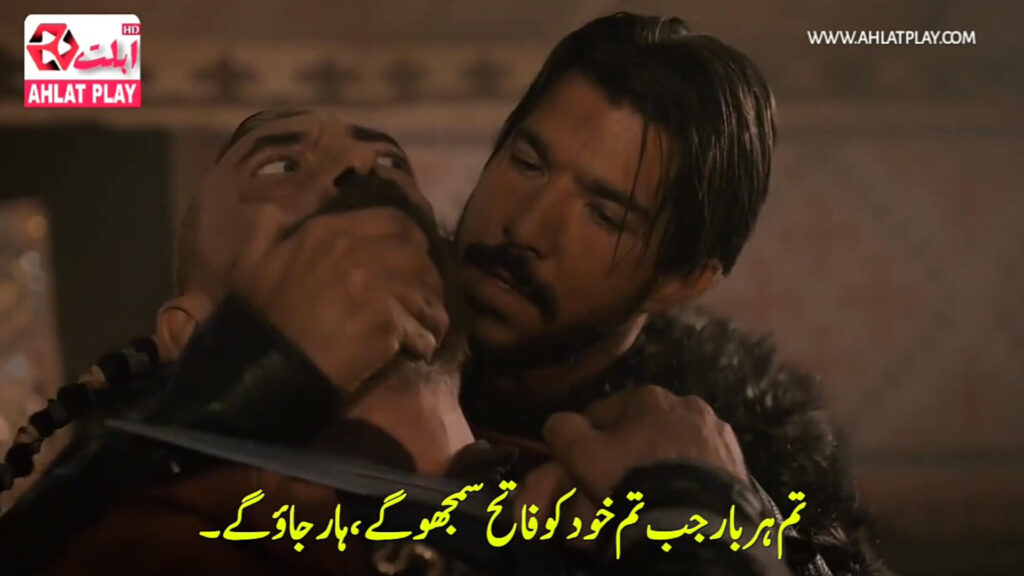Mevlana Celaladdin Rumi Season 3 Episode 3 With Urdu Subtitles

Mevlana Celaladdin Rumi Season 3 Episode 3: A Journey of Transformation and Spiritual Awakening
The world of Mevlana Celaladdin Rumi, the Turkish historical drama series, has captivated audiences by depicting the life and teachings of the renowned 13th-century Persian poet and mystic, Jalaluddin Rumi. Season 3, Episode 3 continues the enchanting journey of Rumi, his followers, and the intertwining of deep spiritual encounters, all within the cultural framework of 13th-century Anatolia. This episode brings forth significant developments, particularly with the fateful meeting between Rumi and Shams-e-Tabrizi, the evolving landscape of Sufism, the changes in the Haram (the religious sanctuary), and Selahaddin Zerkubi’s new duties.
In this article, we will explore these key themes and their implications on the characters and the development of Rumi’s philosophy, all while acknowledging the cultural richness of the period and the role of the Sufi tradition in the series.
Rumi and Shams-e-Tabrizi: A Transformative Encounter
One of the most profound moments in this episode is the fateful meeting between Mevlana Rumi and Shams-e-Tabrizi, an encounter that would go on to redefine Rumi’s spiritual journey. Shams, a wandering dervish and spiritual guide, was known for his unorthodox teachings and deep mystical wisdom. His meeting with Rumi was not just a casual event but a transformative turning point for the poet, marking the beginning of a deep and sometimes controversial relationship.
In this episode, the depiction of their meeting is rich with symbolism and mystical undertones. Shams, with his unconventional ways, challenges Rumi’s previous understanding of spirituality, urging him to look beyond the superficial and into the depths of his own soul. Their bond is portrayed as an intense and mystical connection, one that will influence not only Rumi’s poetry but also his entire worldview.
This meeting is significant not just for the characters, but also for the audience, as it introduces the central themes of spiritual enlightenment, self-discovery, and the role of a spiritual guide in a seeker’s journey. Shams represents the catalyst for Rumi’s deep dive into the world of Sufism, which would eventually lead him to write his famous works, including the Divan-e-Shams and the Mathnawi.

The Culture of Sufism: Mysticism, Poetry, and Philosophy
The third season of Mevlana Celaladdin Rumi has increasingly focused on the culture of Sufism, particularly the mystical, spiritual, and intellectual aspects that shaped Rumi’s life. Sufism, as a branch of Islam, is centered on the idea of seeking a personal connection with the divine through meditation, love, poetry, and music. This episode delves into these elements of Sufism, highlighting how Rumi’s encounter with Shams introduces him to a more profound understanding of the divine.
Sufism, as portrayed in the series, is not merely a religious path but a way of life that permeates every aspect of existence, including relationships, art, and even politics. Rumi’s poetry, full of divine love and longing, becomes the vehicle for his expression of the ineffable truths that lie beyond human comprehension. The series also highlights the essential role of the Sufi master-disciple relationship, where the master (in this case, Shams) challenges the disciple (Rumi) to break free from conventional thinking and embrace a higher, more intuitive form of spiritual wisdom.
The episode also brings attention to the concept of fana (self-annihilation) and baqa (spiritual immortality), two central concepts in Sufi thought. Rumi’s poetry, as shown in the episode, is a manifestation of these principles. His journey is one of annihilating the ego and reaching a state of unity with the Divine. The episode emphasizes the mystical practices of Sufism, including dhikr (remembrance of God), sama (whirling dance), and the importance of love as the central force in understanding the universe.
Changes in the Haram: A Reflection of Political and Social Shifts
Another significant development in this episode is the portrayal of changes within the Haram, the religious and political heart of the community. The Haram, which is a symbol of religious authority and power in the series, undergoes various transformations as the political landscape shifts. The episode shows the increasing influence of external political forces on the spiritual community, particularly as tensions rise between the rulers of Anatolia and the Sufi orders.
The changes in the Haram reflect the broader socio-political changes of the time, particularly the tensions between the orthodox religious establishment and the more mystical, free-thinking Sufis. Rumi’s teachings, with their focus on love and tolerance, often stood in stark contrast to the rigid, institutionalized religious practices that dominated the period. As the episode unfolds, it becomes clear that the conflict between tradition and innovation will play a crucial role in the development of Rumi’s philosophy and the spread of Sufism.
Moreover, the episode emphasizes the role of the religious authorities in the Haram, who, while initially skeptical of Rumi’s unorthodox teachings, begin to acknowledge his growing influence. This shift in perception marks the beginning of Rumi’s ascension as a spiritual leader who bridges the gap between established religious norms and the more liberated, mystical worldview that Shams represents.
Selahaddin Zerkubi’s New Duty: The Strengthening of Leadership
Selahaddin Zerkubi, a close disciple of Rumi, plays a vital role in this episode as he embarks on a new duty that requires him to step up as a leader within the community. In the series, Zerkubi is depicted as a skilled stone mason who finds his spiritual path through Rumi’s teachings. His new duty is symbolic of the larger changes taking place within the community. Zerkubi’s leadership role signifies the growing influence of Rumi’s followers and the increasing need for structured leadership in the face of political instability.
Zerkubi’s new position also highlights the importance of practical action in the Sufi path. While Rumi and Shams focus on the inner spiritual journey, Zerkubi represents the grounding force that ensures the community remains stable and focused on its mission. His role serves as a bridge between the spiritual and the practical, embodying the idea that spirituality is not confined to the inner realm but must also manifest in outward actions.
Conclusion: A Spiritual Journey of Love, Transformation, and Leadership
In conclusion, Mevlana Celaladdin Rumi Season 3, Episode 3 delves deeply into the transformative journey of Rumi, his encounter with Shams-e-Tabrizi, and the unfolding cultural and political changes in 13th-century Anatolia. Through the meeting of Rumi and Shams, the episode beautifully captures the spiritual awakening that takes place when a seeker is exposed to deeper truths beyond the conventional.
The episode also highlights the cultural richness of Sufism, the mystical path of love and union with the Divine, while portraying the changes within the religious and political structures of the time. Finally, the character of Selahaddin Zerkubi exemplifies the balance between inner spiritual transformation and the outward responsibility of leadership.
This episode, with its emphasis on love, transformation, and spiritual enlightenment, serves as a powerful reminder of the timeless relevance of Rumi’s teachings. His message of unity, love, and the pursuit of inner truth continues to resonate with people across the world, making this series an essential part of understanding Rumi’s legacy and the broader Sufi tradition.



